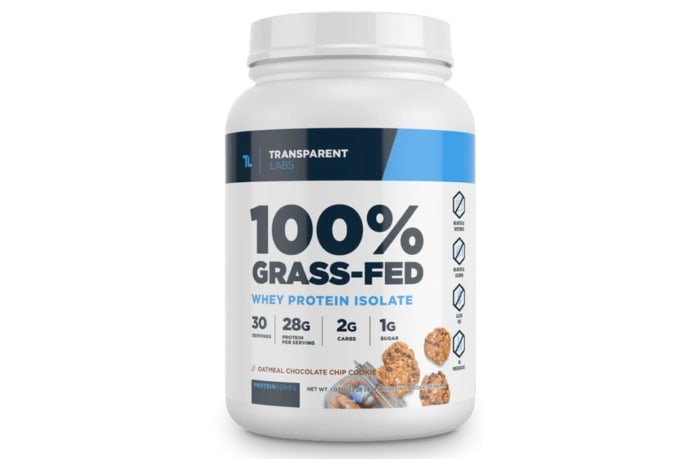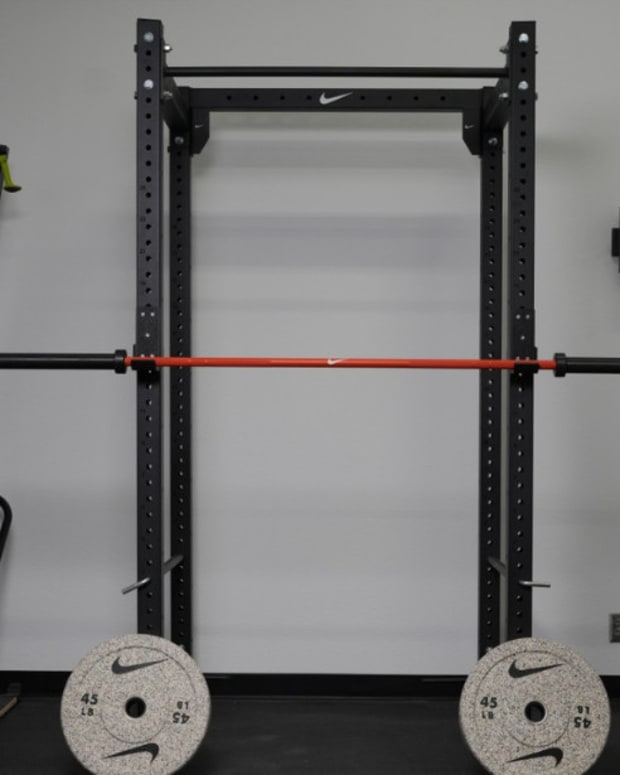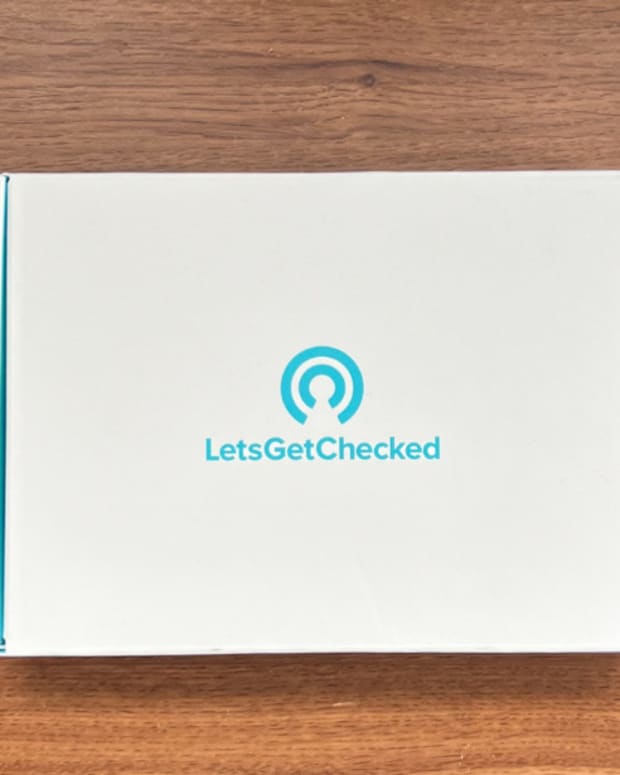The products featured in this article have been independently reviewed. When you buy something through the retail links on this page, we may earn commission at no cost to you, the reader. Sports Illustrated editorial staff are not involved in the creation of this content. Learn more here.
Proteins are a part of every cell and play a vital role in how efficiently our bodies function. The protein we eat is broken down into amino acids and absorbed. Then, it’s used to build muscles and organs, make antibodies and hormones, and to provide energy. Food-based proteins and protein supplements provide the essential amino acids that our bodies cannot make on their own, which is why it’s a key part of our diet.
There are many different options of protein sources to choose from. Animal-based food like meat, poultry, fish, eggs and dairy products are all good protein sources. If you’re vegan, protein can be sourced from beans, legumes, quinoa and nuts to name a few. Supplements such as protein powders, protein bars and protein shakes are also excellent protein sources, and there are plant-based options as well.
Related Post: Best Vegan Protein Bars
You may be wondering if you're getting enough protein from the right sources. In this article, we’ll go over everything you need to know about protein, including the benefits, potential side effects and how much you need. If you're worried you're not getting enough, we also include 17 tips to help you get more protein into your diet.
What Is Protein?
A protein is a molecule made up of 20 different types of amino acids that control cell function. These complex molecules work to maintain the structure of cells and regulate tissues and organs. These are required by the body to support the immune system, produce enzymes and hormones and build and repair tissues. Therefore, protein is an essential component of your diet.
The USDA states that healthy dietary patterns include a variety of nutrient-dense protein foods from both animal and plant sources, and include the following subgroups: meats, poultry, eggs, seafood, nuts, seeds and soy products. The majority of your protein intake should be from fresh, frozen or canned lean proteins versus processed meats such as hot dogs or deli meats.
Benefits of Adding Protein to Your Diet
According to the Harvard T.H. Chan School of Public Health (HSPH), eating healthy protein sources defined as fish, poultry, nuts and beans can lower the risk of heart disease, diabetes and cancer. These protein sources also reduce the risk of premature death and help with weight control. Research shows boosting protein intake may also help increase strength and build lean muscle mass.
Related Post: The Best Protein Powders for Major Muscle Gain
Protein provides nutrients and functions as the building blocks for bones, muscles, cartilage, skin and blood. When consumed before carbohydrates, it can lower post-meal glucose and insulin level spikes for those with diabetes or those at high risk. Your body’s immune cells rely on protein to grow and function, and it helps form hair, nail and skin cells.
In 2021, Harvard researchers associated higher protein intake with lower odds of subjective cognitive decline in a study conducted over twenty years. It states, “Higher intakes of beans/legumes, fish and lean poultry were significantly associated with better late-life subjective cognitive function.”
How Much Protein Do You Need?
The amount of protein you need daily depends on your sex, age, height, weight and level of physical activity. Pregnant or breastfeeding women need a different amount per day as well. The USDA has a Dietary Reference Intake (DRI) calculator that can estimate your recommended daily amount (RDA) based on height, weight, age, sex and activity level.
The HSPH recommends determining your daily protein intake by multiplying your body weight in pounds by 0.36. However, research has shown that very active individuals should eat 0.64 to 0.91 grams of protein per pound, so it’s important to consider your activity level. If you’re unsure, it’s always a good idea to consult your doctor.
Side Effects of Eating Too Much Protein
Protein provides many benefits; however, eating it in excess can cause some adverse effects. Here is an overview of the potential side effects:
- Weight gain: Once your body’s protein needs are met, any extra is used as energy or stored as fat
- Gastrointestinal issues: If you consume more than the RDA of protein, you can become constipated due to getting fewer nutrients like fiber needed for digestion. If you’re eating a lot of dairy products to reach protein goals, you may experience diarrhea
- Bad breath: Higher protein intake can increase the production of volatile sulfur compounds (VSCs) by oral bacteria, which contributes to bad breath
- Elevated blood lipids and heart disease: High-protein foods that contain a lot of saturated fat and cholesterol, like red meat, can lead to cardiovascular disease
- Kidney disease: Those who are predisposed to kidney disease are more at risk since extra protein intake is taxing on the kidneys
Research shows that extra protein is not used efficiently and could impose a metabolic burden on the liver, bones and kidneys. It may also increase cancer risk, but further investigation is needed to provide more definitive evidence.
Overall, a well-balanced diet that includes the daily amount of protein recommended by your primary care provider will help avoid these issues.
Sources of Protein
There are plenty of foods that are a good source of protein, but not all are created equal. The HSPH defines a “complete” protein source as one that contains all twenty-plus types of amino acids necessary to make new proteins in the body. It reports that animal-based foods such as meat, poultry, fish, eggs and dairy are “complete” sources. Plant-based foods like fruits, vegetables, nuts, grains and seeds often lack the essential amino acids; however, if you’re avoiding animal-based foods, quinoa and chia seeds are great options to include, as they are complete sources of protein.
Protein supplements
Protein supplements are an excellent choice for those who need plant-based alternatives or want to integrate different protein sources into their diet. These supplements provide a convenient option for active individuals who want to consume protein at the recommended times before and after exercise and every three to five hours. Supplement brands offer protein powders, bars and shakes with a variety of flavors and ingredients. When considering a supplement, the Mayo Clinic Health System recommends choosing one with:
- Around 200 or fewer calories
- Five or fewer grams of sugar
- Two grams or less of saturated fat
- No partially hydrogenated oils or trans-fat
Powders
Some protein powders are sourced from eggs, milk and plants. Milk-based protein powders are casein and whey protein. Casein protein is made from dairy and digests more slowly than animal and plant protein. One study found that ingesting casein before sleep improves the net balance of protein during sleep, which can help build and repair muscle.
Plant-based powders are made from soybeans, peas or hemp. Other vegan options include protein from peas, sunflower seeds, pumpkin seeds or alfalfa.
Related Post: Pea Protein vs Whey Protein
These supplements typically contain other ingredients like vitamins and minerals, added or artificial sugar, thickening agents and artificial flavors. Some protein powders can support weight loss goals because they include extra nutrients like fiber, which helps you lose weight by keeping you full.
There is an abundance of tasty protein powder flavor options, such as strawberry and cookies and cream. Before choosing a protein powder, look at the label to familiarize yourself with the added ingredients and sugar content.
Check out our picks for The Best Protein Powders for Weight Loss.
Bars
Protein bars are easy to grab on the go and provide vitamins, minerals, fiber and carbs. These are great to keep in a backpack, gym bag, office drawer or anywhere else you can easily access in case you get hungry, and they have a decent shelf life.
Protein bar ingredients typically include a protein source, sweeteners and other ingredients such as nuts or fruit depending on the bar you choose. You’ll also see additives that prevent sticking, increase shelf life and improve texture. Some protein bars have more additives and calories than others, so it’s important to look at the Nutrition Facts label to help you make informed and healthy food choices.
Shakes
Protein shakes are pre-made drinks that contain milk or a milk alternative mixed with protein powder and other ingredients such as sweeteners, thickeners and flavoring. Like protein powder, these are available in a variety of flavors. Shakes are sold in bottles and cans and are ready to drink. These are an appealing option for those who don’t want to fuss with mixing a powder.
The ingredient list can contain additional nutrients such as carbs, vitamins and minerals, which makes it a suitable snack or meal replacement. As always, it's important to read the nutrition label to ensure there aren’t too many calories and a lot of added sugar. If you want more control over the ingredients in your protein shake, these can be made easily at home using a blender, ice, your liquid of choice and any additional ingredients you’d like to add.
17 Ways to Add Protein to Your Diet
Here are 17 easy ways to add protein to your diet.
1. Start with breakfast
Also known as the most important meal of the day, breakfast breaks your overnight fasting period. Research shows that eating a high-protein breakfast can be a useful strategy in improving your satiety to avoid overeating and improve diet quality.
The first obvious choice is to eat eggs. One whole large egg contains 6.24 grams of protein, and other nutrients such as iron and vitamin A. Eggs can be prepared in many different ways such as scrambled, hard-boiled, soft-boiled, poached, baked, pan-fried and more. Nutritional yeast seasoning has a savory flavor and can be sprinkled on top. This deactivated yeast is a great source of plant protein and contains three grams of protein per five-gram serving.
Not a fan of eggs? Oatmeal contains 13.5 grams of protein per 100-gram serving and can be prepared ahead and stored in the refrigerator or quickly heated in the microwave. If you want to avoid added sugar and other ingredients, mixing a scoop of protein powder with plain oatmeal and a handful of your favorite fruit is a delicious way to get additional protein. You can also purchase protein pancake mix or make your own; however, it’s important to be mindful of the amount of syrup or sweetener you use.
If you want to spruce up your coffee, mixing a scoop of protein powder can add flavor and protein to your morning pick-me-up.
2. Choose low-fat high-protein dairy products
High-protein dairy products that are low in fat are considered quality protein sources and are associated with a lower BMI when consumed daily.
Plain Greek yogurt made from low-fat milk has 10 grams of protein and 0.37 grams of fat per 100-gram serving, compared to plain yogurt made from whole milk, which has 3.82 grams of protein and 4.48 grams of fat per 100-gram serving.
Low-fat cheese such as part-skim mozzarella and reduced-fat provolone contains over six grams of protein and less than five grams of fat per one-ounce serving. These cheeses are a great choice for snacking. String cheese is commonly made from mozzarella cheese if you’re looking for a high protein snack you can grab it on the go.
Cottage cheese made with two percent milk has 11 grams of protein and 2.3 grams of fat per 100-gram serving and keeps you full.
3. Set a timer or reminder
The Mayo Clinic Health System states that consuming 15 to 30 grams of protein per meal is generally beneficial, and eating over 40 grams in one sitting won’t benefit you more than the recommended amount.
That means if your protein intake is higher, you’ll need to incorporate it throughout the day. A timer or setting reminders on your phone can keep you on track.
4. Eat your protein first
During breakfast, lunch and dinner, choosing to eat your protein first helps ensure you won’t be too full after eating the carbs, vegetables or other sides. This also supports weight control since protein takes more energy to digest and gives your body a feeling of satiety. Another benefit is it can also lower post-meal glucose and insulin level spikes when eaten before carbohydrates.
5. Always have protein powder and/or protein bars handy
Many protein brands have a shelf life of up to a year or more, and having protein on hand gives you quick and easy access to a great protein source. Aside from protein shakes, you can use it for oatmeal, protein pancakes and other recipes, add it to coffee or take a scoop on the go for a busy day or traveling.
Protein bars also have a decent shelf life and can be eaten anywhere or stored at the office, in your car or wherever else you may need to access a quick snack. These are also great for road trips since eating out isn’t always the most healthy option.
6. Log your protein intake
If you’re having trouble keeping tabs on whether or not you’ve had enough protein, logging it in an app is a helpful way to see how much you’ve had. A food tracking app can also ensure you haven’t eaten too much protein, since this can lead to adverse effects.
Check out our top picks for The Best Macro Tracker to Reach Your Nutrition Goals
7. Make a protein shake
Protein shakes are widely available, but they’re pretty easy to make at home if you have a blender.
Here’s a basic protein shake recipe:
- One cup of ice
- Four ounces of low-fat milk or liquid of choice
- One scoop of protein powder
- One small/medium-sized banana or fruit of choice
- Stevia or healthy sweetener to taste
Combine all the ingredients and blend until smooth.
This shake can be made in many variations using any foods and flavors you like. For example, you could add canned pumpkin and cinnamon or different fruits to satisfy your sweet tooth.
Spirulina is a blue-green algae that can be mixed into a protein shake, and it has 4.02 grams of protein per tablespoon. Chia seeds or hemp seeds can be added for some additional protein. Chia seeds contain 4.68 grams of protein per one-ounce serving, and hemp seeds contain 10 grams of protein per 30-gram serving.
Related Post: How To Use Protein Powder
8. Top your food with protein-rich nuts like almonds, pine nuts and walnuts
Toasted pine nuts, almonds and walnuts add a nice crunch and flavor to salads, pasta dishes and other meals. Nuts can also be eaten raw for a protein-filled snack. For every 100-gram serving, almonds have 21.4 grams of protein, pine nuts have 15.7 grams of protein and walnuts contain 14.6 grams of protein.
9. Eat nut and seed butter
Spreadable nut and seed butter provide a good source of protein. This includes almond butter, peanut butter and sesame seed butter. One tablespoon of creamy almond butter contains nine grams of protein, one tablespoon of peanut butter has eight grams of protein and one tablespoon of sesame seed butter contains 2.9 grams of protein.
These can be used as a condiment, in a recipe or eaten plain. When choosing an almond, peanut or seed spread, always look at the nutritional label to ensure there aren’t a bunch of additives and sugar.
10. Incorporate protein into every meal and snack
The USDA MyPlate standard says to fill ¼ of your plate with protein and eat a variety to get more necessary nutrients. This standard pertains to breakfast, lunch and dinner. For snacks, you’ll get a two-for-one benefit when you choose protein-rich foods that provide other nutrients. For example, canned tuna is rich in calcium and an apple with almond butter provides healthy carbs and fiber.
11. Choose your protein wisely
When you eat protein from animal and plant sources, you’re consuming additional fat, sodium, fiber, carbs and other components. Saturated fat is an unhealthy fat that can lead to other problems such as heart disease and cause you to gain weight when eaten in excess.
Consider this: One gram of protein is equal to four calories, and one gram of fat is equal to nine calories. That means if you choose meat with high fat content, you’ll likely consume more calories from fat than protein. Harvard Medical School defines the most healthful protein sources as fish, poultry, eggs, legumes, beans, tofu, nuts and low-fat or non-fat dairy products. Protein powders provide a more concentrated source of protein if you want to avoid excess calories from other elements.
12. Have protein-rich snacks readily available
Lean jerky is an easy way to get protein and can be eaten on the go. If you’re purchasing it from the store, check the nutritional information for additives and sugar. Lean jerky can also be made from home using a dehydrator or a conventional oven. This is an ideal option for those who want control over the additional ingredients, and it’s more cost-effective.
Trail mix is another protein-rich snack, and you can control the amount of protein it has by making it yourself. All you have to do is buy a variety of nuts like almonds, walnuts and pistachios, and mix it with dried fruit for a healthy source of carbohydrates and fiber.
13. Do your best while eating out
Of course, no one is perfect and you might have to eat out more than you’d like. There may be days when you want to indulge, and that’s okay. However, if you’re looking for good protein options, you’re likely to them on almost any menu.
Many Asian restaurants offer edamame, which has 18 grams of protein in one cup. If you’re at a steakhouse, you can choose a lean cut such as a filet or sirloin. A salad is a great way to get protein without an excess of fats and carbs. Plus, there’s no shame in ordering an extra side of protein if you need to. If you want pasta, try to choose an option with a good source of protein as opposed to just noodles and cheese.
14. Eat beans and legumes frequently
Beans and legumes are one of the best plant-based sources of protein. This includes dried beans, split peas and lentils. One-half cup of beans provides seven grams of protein, which is equivalent to one ounce of meat. Unlike animal-sourced protein, beans and legumes have fiber which helps keep you full. Research conducted by the Cleveland Clinic suggests that:
- One serving of beans daily can help lower LDL cholesterol
- Four servings per week can reduce the risk of heart disease
- You can decrease the risk of recurrence for colon polyps that turn cancerous by eating four servings of beans and legumes per week
Hummus (made from chickpeas) is a tasty snack that contains 19.1 grams of protein per one-cup serving. In stores, there are plant-based bean burgers available, or these can be made at home and frozen at home for an easy dinner.
15. Replace refined grains with whole grains
The American Heart Association states that whole grains are made up of the bran, germ and endosperm, and refined grains are milled to remove the bran and germ. The milling process used with refined grains creates a finer texture and extends the shelf life, but it strips the grain of its nutrients like iron and dietary fiber. Some refined grains include white rice, most white bread, crackers, cakes and other processed foods. While they still have the endosperm which contains the protein, whole grains offer other important nutrients we need and leave you feeling more satisfied.
Some nutritious whole-grain options include:
- Oats
- Barley
- Farro
- Wild or brown rice
- Quinoa
- Corn
- Rye
16. Meal prep your protein
A lean source of protein, such as chicken, can be marinated or seasoned to your liking and cooked in bulk. Another option is to make large portions of protein when preparing meals, and then cut and store the extra meat in the refrigerator for an easy protein snack.
17. Find recipes for baked goods that incorporate beans and legumes
If you have a sweet tooth but still want to make your protein goals, there is a large variety of recipes online for desserts that incorporate black beans and legumes like chickpeas into the ingredients. These desserts include cookies, brownies and muffins to name a few.
Our Favorite Protein Powders
Transparent Labs 100% Grass-Fed Whey Protein Isolate
Transparent Labs 100% Grass-Fed Whey Protein Isolate has 28 grams of protein per serving sourced from 100-percent grass-fed American dairy cattle to help increase strength and build lean muscle mass. There are eight flavored options and one unflavored option if you prefer to mix your protein with another supplement such as creatine. There are no artificial colors, sweeteners or flavors and this supplement is gluten-free.
XWERKS Grow Whey Protein Isolate
XWERKS Grow Whey Protein Isolate has 25 grams of protein and more than six grams of BCAAs per serving which increase muscle building and power output. There are zero grams of fat and one gram of carbohydrates per serving, which is ideal for those who are tracking macros or following a keto diet. The protein is sourced from naturally raised grass-fed cows in New Zealand and XWERKS uses a microfiltration process that makes it lactose-free.
How to Get More Protein FAQs
How do you eat more protein as a vegan or vegetarian?
The best way to get protein is from plant-based protein sources like beans, lentils, edamame, tofu, tempeh and quinoa. Vegetarians can also eat eggs, egg whites and dairy products. Protein supplements are a great alternative too. Gainful offers a vegan “complete” protein, and our Gainful Protein Powder Review provides a more in-depth look at the ingredients and nutritional information.
How can I get 100 grams of protein per day?
An easy way to reach 100 grams of protein per day is to incorporate it with every meal and snack. Good protein sources include meats, seafood, plant sources and from supplements such as protein powders or bars.
How much protein do I need to gain muscle?
One study suggests consuming 1.5 grams of protein per kilogram of body weight each day will promote muscle growth. However, your age, activity level and other factors can impact how much you need. Always consult with your doctor to determine the amount that’s right for you.
Related Post: How Much Protein Should I Eat to Lose Weight?
Can too much protein be bad for you?
Yes, extra protein intake can lead to a higher risk of developing kidney stones, heart disease and colon cancer. It can also cause you to gain weight since excess calories from any source are stored as fat.
Prices are accurate and items in stock as of publish time.













